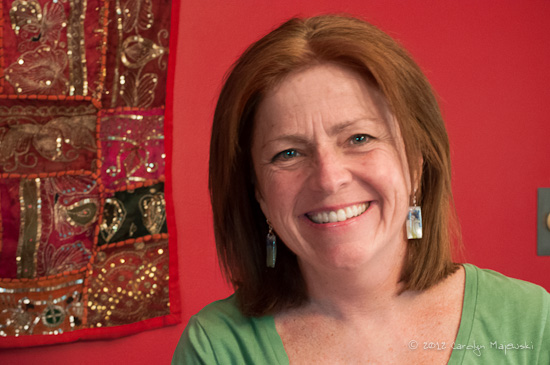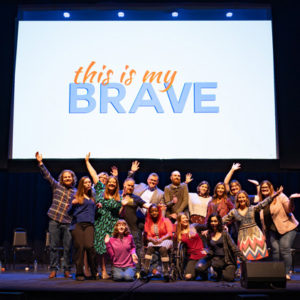In Each Other’s Shoes
Ever since my diagnosis of bipolar disorder in 2006, I have been trying (hard) to explain what it feels like to people who don’t live with it. Mania? Actually it’s more than just doing lots of stuff fast. Depression? More than just feeling bummed on a rainy day. I’ve searched for the words to describe the wild mood swings that would send me from one extreme to the other, and back again, sometimes within hours. Friends and family members would nod at me, and try to comprehend, but I could tell they didn’t really get it. And that’s understandable. They had never experienced anything like what I’d been going through. They’d respond with sympathy, but not empathy. They felt badly for me, but couldn’t put themselves in my shoes.
That was one reason I was so happy to produce This is My Brave in Philly last year, and why I am looking forward to producing another show next year. My fellow cast members really, truly “got it.” And by telling our stories onstage, I think we not only reached audience members also living with mental illness, but, just as importantly, reached the people who love them. I hope by hearing the different ways we struggle, as well as the ways we continue to function in the world, we helped erase some of the stereotyping and some of the stigma. But I was resigned to living in a world where I, where we, were largely misunderstood.
Well, here we all are, in the midst of what feels like an international mental health crisis. The frightening reality of coronavirus has touched virtually every person on earth by now. For those of us for whom dread and worry are constant companions, these recent developments have us feeling much like we usually do—only more so.
But for those with naturally sunny, carefree dispositions, those who have never had to deal with a mental health issue—they are coming face to face with fear, with uncertainty, with foreboding. They have nightmares, and waking nightmares too, as the headlines and TV reports scream the latest numbers of those infected. And, daily, the bad news comes closer and closer to their home towns, even their homes. It’s just about impossible to get away from it. For maybe the first time ever, they are living with anxiety and depression.
Turns out, we are more similar to one another than we thought, and, in a way, closer than ever—even though we cannot make physical contact. We understand each other, finally. We are sharing this huge crisis, and we are all searching for ways to cope.
As a person who has benefitted greatly from therapy, I am so glad that psychiatrists and psychologists are making virtual therapy sessions available to their patients online. I’m so thankful for the amazing people staffing suicide and other help lines—they are providing hugs with their listening ears and wise words, during a time when real hugs are impossible. I hope that people who find themselves, for the first time, dealing with overwhelming emotions and paralyzing fears, can seek help—it’s out there.
May this difficult time produce something good, as it gives opportunities to bring out the good in all of us. On that glorious future day when we can once more step into the sunshine and reunite, may we remember how we felt—how all of us felt. When a more normal life resumes, may those for whom these feelings were temporary, never forget the many of us who will continue to fight the battle inside. May they truly have empathy and understanding, after this time of sharing our everyday struggles. And may that new awareness inspire more conversations and more reaching out, among families and neighbors and even strangers.
Hang in there, friends. We’ll get through this, together.

About the Author:
Elise Seyfried (producer TIMB 2018) is the author of four books of essays.and numerous freelance essays for publications including HuffPost, The Philadelphia Inquirer, Modern Loss, Purple Clover, Chicken Soup for the Soul, and Living Lutheran. She is also Director of Spiritual Formation at Christ’s Lutheran Church in Oreland PA, mom of five grown kids and grandma of two.

